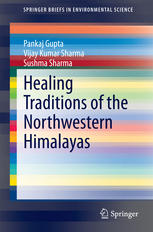

Most ebook files are in PDF format, so you can easily read them using various software such as Foxit Reader or directly on the Google Chrome browser.
Some ebook files are released by publishers in other formats such as .awz, .mobi, .epub, .fb2, etc. You may need to install specific software to read these formats on mobile/PC, such as Calibre.
Please read the tutorial at this link: https://ebookbell.com/faq
We offer FREE conversion to the popular formats you request; however, this may take some time. Therefore, right after payment, please email us, and we will try to provide the service as quickly as possible.
For some exceptional file formats or broken links (if any), please refrain from opening any disputes. Instead, email us first, and we will try to assist within a maximum of 6 hours.
EbookBell Team

5.0
20 reviewsThis book discusses the perception of disease, healing concepts and the evolution of traditional systems of healing in the Himalayas of Himachal Pradesh, India. The chapters cover a diverse range issues: people and knowledge systems, healing in ancient scriptures, concept of sacredness and faith healing, food as medicament, presumptions about disease, ethno-botanical aspects of medicinal plants, collection and processing of herbs, traditional therapeutic procedures, indigenous Materia medica, etc. The book also discusses the diverse therapeutic procedures followed by Himalayan healers and their significance in the socio-cultural life of Himalayan societies.
The World Health Organization defines traditional medicine as wisdom, skills, and practices based on theories, beliefs, and experiences indigenous to different cultures, used in the prevention, diagnosis, improvement or treatment of physical and mental illness and maintenance of health. In some Asian and African countries, 80% of the population depends on traditional medicine for primary health care. However, the knowledge of these conventional healing techniques and traditions associated with conveying this knowledge are slowly disappearing. The authors highlight the importance of safeguarding this indigenous knowledge in the cultural milieu of the Himachal Himalayas.
This book will be an important resource for researchers in medical anthropology, biology, ethno-biology, ecology, community health, health behavior, psychotherapy, and Himalayan studies.